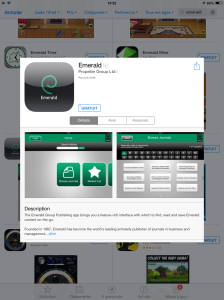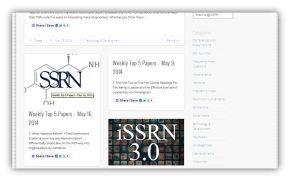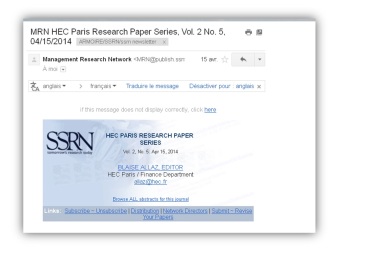With the growing use of mobile devices in both daily and academic life, databases and other online resources are increasingly providing mobile access or developing applications to support their platforms.
Two recent examples of this are:
Emerald is a leading publisher of journals and books in the business and management domains.
Few month ago, Emerald has released a free application for iPad and iPhone which provides access to 100 000 journal articles, available from the app store.
Here’s how:
Emerald
Open the app store and search for ‘Emerald’
Select and download the free app

Once downloaded, open the application.
You will be met with the home page, as below

You can search for articles using the simple search field.
Your results will be displayed in the form of icons depicting each article title.
NB: If you are connected to the HEC Wifi network you will also be able to get the PDF full text for each article.

The “Read Full-Text” icon will take you to an article summary page (redirected via your browser) with the option to view the article in full, PDF format in the tool bar on the right hand side of the screen.

The app also allows you to :
- browse journals by title, by tapping the ‘Browse Journals icon’ to view all available journals alphabetically (as shown below)


EBSCO
EBSCO uses a platform via your browser to offer mobile access to articles
To gain access, go to the HEC Library website –> Electronic Resources –> Databases A-Z
Scroll down alphabetically to find an EBSCO database, for example Business Source Complete, and touch Access EBSCO databases on your mobile device

Tap the EBSCOhost Mobile application is tailor-made for the smaller screens of mobile devices icon

Select one or several databases on the list by ticking the relevant boxes on the left hand side, before selecting ‘continue’

Perform your search as you would normally, providing key words in the search boxes and drop down menus

From the list of results, you can get access to an article summary, or to the full text by tapping ‘PDF full text’

The article will appear on your screen, as below

For further information on any of the above, do not hesitate to contact the library 😉























